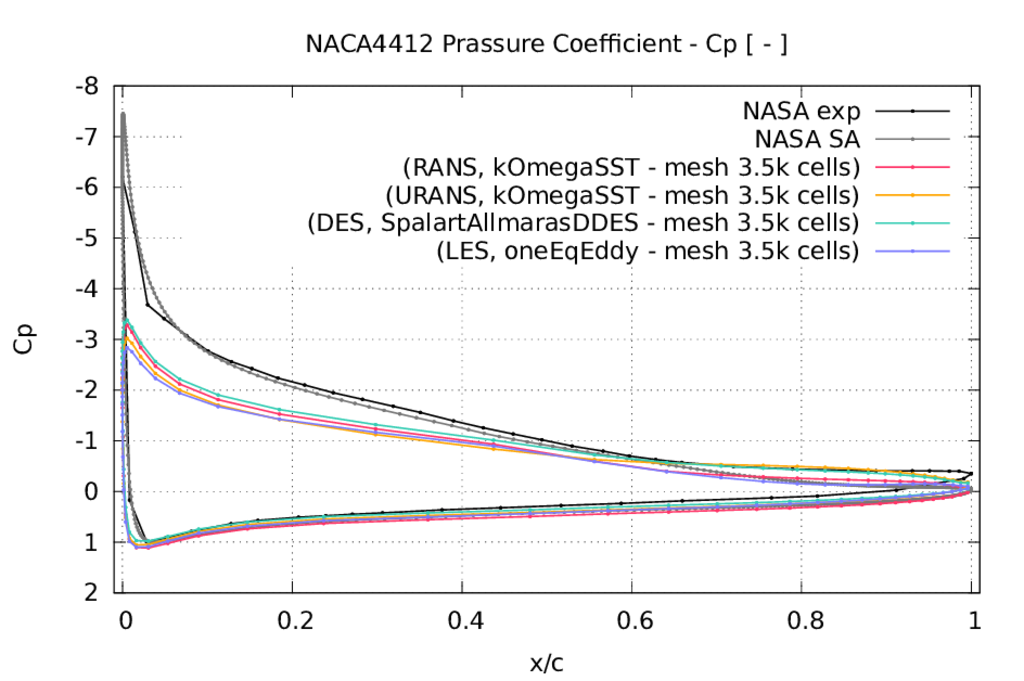Previous: RANS, , lowRe, Grid Up: NACA4412 Test Case Next: Appendix: RANS Theory
This is an automatically generated documentation by LaTeX2HTML utility. In case of any issue, please, contact us at info@cfdsupport.com.
RANS vs. URANS vs. DES vs. LES
The run script Allrun.sh settings for steady state RANS is following:
turbulence=RANS solver=simpleFoam mode=incompressible wall=wallFunction endTime=0.00005 deltaT=0.00000005 NProc=6 mesh=3.5k turbulenceModel=kOmegaSST
The run script Allrun.sh settings for transient RANS is following:
turbulence=RANS solver=pimpleFoam mode=incompressible wall=wallFunction endTime=0.00005 deltaT=0.00000005 NProc=6 mesh=3.5k turbulenceModel=kOmegaSST
The run script Allrun.sh settings for transient DES is following:
turbulence=LES solver=pimpleFoam mode=incompressible wall=wallFunction endTime=0.00005 deltaT=0.00000005 NProc=6 mesh=3.5k LESModel=SpalartAllmarasDDES
The run script Allrun.sh settings for transient LES is following:
turbulence=LES solver=pimpleFoam mode=incompressible wall=wallFunction endTime=0.00005 deltaT=0.00000005 NProc=6 mesh=3.5k LESModel=oneEqEddy

Figure: NACA4412: Comparison RANS vs. URANS vs. DES vs. LES turbulence modeling. Mesh 3.5k cells. Pressure coefficient  versus dimensionless x-axis. The x-axis was divided by the length of the chord of the NACA4412 profile. Dataset NASA exp is the experimental data. Dataset NASA SA is the NASA RANS simulation results with Spalart Allmaras turbulence model.
versus dimensionless x-axis. The x-axis was divided by the length of the chord of the NACA4412 profile. Dataset NASA exp is the experimental data. Dataset NASA SA is the NASA RANS simulation results with Spalart Allmaras turbulence model.





